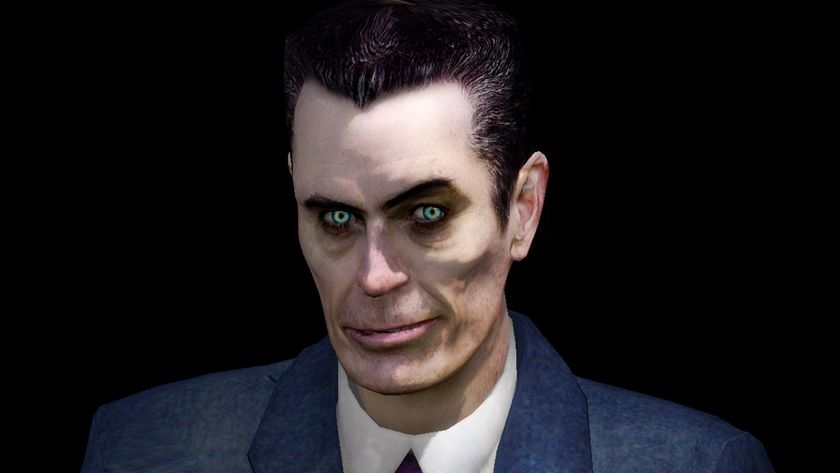The making of Star Wars Episode 1: Racer – How a sneak peek at prototype podracers inspired this memorable Star Wars racing game
From secret concept art to release, the Shadows of the Empire team reflect on the making of this classic Star Wars game
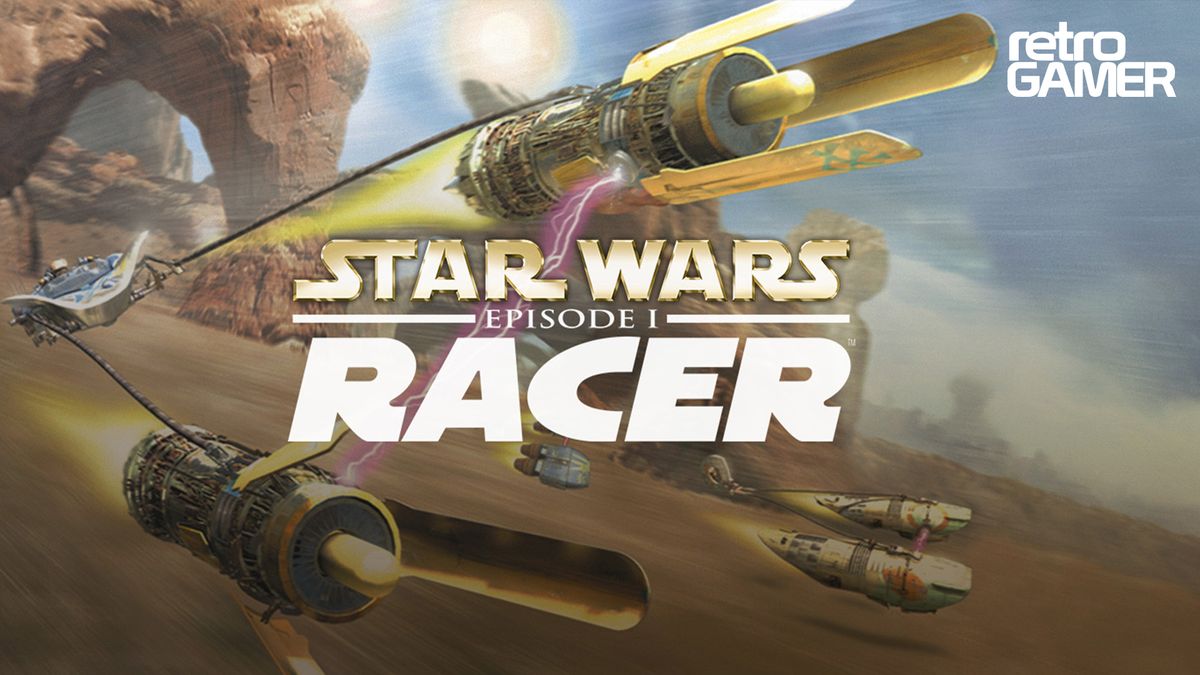
To some extent, game design is in constant flux. But the dramatic shift from sprite-based to polygonal gaming in the late '90s required the way games were designed to be all but reinvented. Understandably, many early 3D production teams relied overly on designs proven by sprite-based gaming. And as former Lucasarts designer Jon Knoles concedes, the N64 launch title Shadows Of The Empire was one such example.
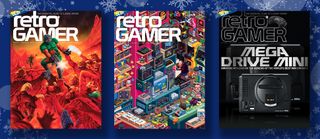
Love retro gaming? From SNES to Mega Drive, PSOne to Xbox, and Spectrum to C64, Retro Gamer magazine delivers amazing features and developer interviews about history's best games every month, and you can save up to 57% on a print and digital subscription right now.
"We learned the hard way that we tried to do too much with Shadows, which had several modes of gameplay. We came away from that project agreeing that next time we should do one thing, and do it really well. In the summer of 1997, as we were completing the PC version of Shadows, we were kicking around ideas for a follow-up. During this time, a few of us on the team were invited to view early concept art for the first Star Wars prequel up the road at Skywalker Ranch. The first time we saw sketches of the podracers, we knew there was a game to be made [out of them]. The scene was explained to us as 'the Ben Hur chariot race with jet engines instead of horses.' We thought we could make a pretty solid game out of that concept and our existing Shadows game engine."
Following a decision that the project would share its release date with the forthcoming Star Wars prequel, Jon and his fellow project leaders were given their pick of Lucasarts specialists to help meet the strict deadline. "Three of the Shadows core leadership team remained together: myself, Eric Johnston, and Mark Blattel, as well as our producer Brett Tosti. We were a pretty small team by today's standards; something like 25-30 at peak. We needed people with specific skills in real-time 3D, and because we were a high-priority project that had a very hard deadline – it had to come out with the movie – we did get everyone we needed."
Building something from nothing
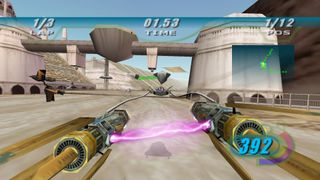
A wealth of production materials from the in-development Star Wars prequel soon proved invaluable to Jon and the other artists in his team, and as the movie's podracers and drivers evolved, Lucasarts created additional vehicles and contestants for its game. "We worked off of photographs of life-sized podracers from the movie set, more detailed smaller scale models used as reference for CG models ILM would later build, photos of miniature sets for the film, and vehicle and character sketches from Lucasfilm's concept artists."
"Originally, the podracers all looked the same: each had an egg-shaped pod pulled by two massive jet airplane engines. All were driven by human pilots, the youngest of which was a teenage Anakin. We watched these concepts evolve into visually-distinct vehicles, each with unique silhouettes and colour schemes, and equally diverse alien drivers to match each vehicle. I think there were 24 podracers and drivers in the movie, and three of us at Lucasarts built all of them in various levels of detail to support the N64. We also added a couple of our own, one designed by Jim Rice, the other by Clint Young, as well as their drivers Jin Reeso and Cy Yunga – see what we did there? These were only accessible if you entered special codes."
As well as new characters, Jon wanted his racing game to feature new worlds, which were devised with the help of noted concept artist Peter Chan. "We had plenty of conceptual art to serve as reference for the Tatooine race seen in the film, but wanted to take players on a colourful tour of the whole galaxy. We enjoyed a good deal of freedom, and invented planets purely for the game. Many Star Wars planets are all one thing: lava planet, ice planet, rock planet, forest moon... Well, we continued that trend, although Baroonda had a lot more variety: a little bit of Tibet, a little Dagobah, a little Mayan ruins – all on one planet."
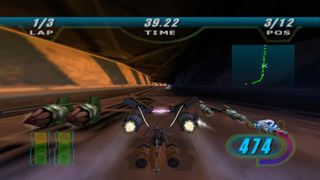
"We had seen plenty of conceptual art for the Tatooine race seen in the film, but wanted to take players on a tour of the whole galaxy"
Jon Knoles
Beyond designing podracers, their drivers and the worlds they would race on, Jon also employed trial, error and testing in order to deliver the courses that would define his Lucasarts racing game. "Three of us designed on paper – then prototyped and built – final art for all 20-something tracks in the game. I built the Tatooine and Baroonda tracks, while Duncan Brown and Jacob Stephens designed and built the rest, with additional level art support. There was one top-down sketch of the Tatooine 'Boonta Eve Classic' race course provided by Lucasfilm, which I used as inspiration and reference when building that track in-game – our first test track. I attempted to build it to scale and discovered it would take nearly 15 minutes to complete a single lap – even at speeds of 400mph! That was too big for our game engine, let alone for fun gameplay. So I reduced it considerably, then widened it accordingly. A great 'ah-ha' moment happened when trying to recreate a big canyon jump. The testers were having a blast seeing how far they could fly, and asked us if we could make the jumps bigger. Before you knew it, we were cutting big holes in every track and making crazy jumps."
Sign up to the 12DOVE Newsletter
Weekly digests, tales from the communities you love, and more
While Jon managed the design and visuals of the Star Wars racer, fellow project leader – coder Eric Johnston – focused on bringing these components to life within an evolving Shadows' game engine, a goal Eric describes with just two words. "There was exactly one objective: go fast! Everything else was secondary, as you can tell from just looking at the vehicles – the initial prototype was a cylinder with no speed limit. It wasn't clear how it might translate into gameplay, but 'go fast' was used like punctuation in many conversations."
And because the game's hyper-fast vehicles were to be dragged forwards by massive left and right engines tethered to their 'cockpits', Eric turned dog walking into podracer simulation in order to help him work out the physics. "I lived in Half Moon Bay at the time – on the coast, south of San Francisco – and had two yellow retrievers, named Abacus and Tangent. We had two harnesses and leashes made of climbing rope, and a skateboard. Maximum speed was always achieved while travelling toward the beach. The cars in Half Moon Bay aren't that fast, but we were always faster. Officially, I don't recommend this!"
Wrestling with the engine
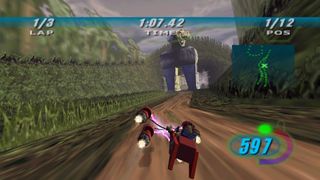
As Eric reconciled physics with road safety, Jon Knoles looked into broadening the gameplay of their racing game with adventure elements. "We found gameplay and graphics inspiration in games like Beetle Adventure Racing by Paradigm, Top Gear Overdrive and Sega Rally. These games felt almost like action adventure games with cars, which is more of what we felt podracing should feel like – the environment and its extreme challenges were critical to the experience."
Further enhancements followed, including a fully-3D, RPG-inspired shop where race winnings could be used to buy parts to improve podracers, which Jon attributes to feature-creep. "Watto's junk shop was just a really cool, well-developed set-piece to add depth using RPG- light mechanics. Funny thing is, we had no intention of using a fully-interactive 3D interface until pretty far into development. I'm really glad we did that. It was much more immersive and fun between races."
In terms of the racer's in-game power-ups, Jon looked to Lucasfilm's Star Wars prequel for inspiration, which resulted in constant access to speed-boosts at the risk of blowing up podracers. "As odd as it sounds, we didn't like the idea of peppering the course with floating power-ups. We wanted to be as authentic to the film as we could, even given the graphical limitations of the N64. We did agree there had to be a recharge mechanic for using the boost – or you'd just use it all the time, but because Anakin's mechanical repair skills were a big part of the race scene, we wanted to play around with that idea of pushing your vehicle beyond its limits, then being able to fix it on the fly."
In addition to influencing podracer power-ups, Lucasfilm's prequel movie – Star Wars: Episode I – also lent its name to Lucasarts' racing game, although Jon and his team didn't quite get the title they had hoped for. "The game was going to be called Star Wars: Episode I Podracer. Unfortunately, there was another sci-fi racing game at the time called Planet Of Death – or simply POD, in North America – published by Ubisoft. They trademarked the word 'pod' in any form of interactive entertainment. We were not allowed to use a title for any game with the word 'pod' in it. Ultimately we settled on Star Wars: Episode I Racer because it was short and to the point."
Reflecting on release
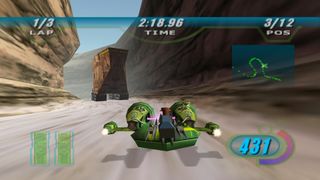
With its name decided, Star Wars: Episode I Racer launched to critical acclaim, which Jon attributes to the game's high tempo. "Critics generally liked the game, even if they thought it was too simple or limited in scope for their expectations of a Star Wars game. I do think our focus on eye-peeling speed led to a more focused and polished game – that didn't go unnoticed."
And if anything, Episode I Racer was a greater commercial than critical success, beating the competition to become the world's bestselling sci-fi racing game, although Eric Johnston recalls having nothing but respect for rival racers. "We loved F-Zero and WipEout. Dev teams were small then, and playing someone else's game was like having a conversation with the developers. You got to see how they solved problems you gave up on."
When asked for his thoughts on his Star Wars racing game now, Eric expresses nostalgia for Racer's development environment and pride at having cocreated the game. "Racer was written at a special time. The source code and dev teams were small but about to start growing. It was received by audiences thrilled to punch the gas and enjoy some improbable vehicular shenanigans. I'm proud to have been part of that."
Jon Knoles' last words on the racer explain the paradox of the game making concessions to speed and yet also securing much of its enduring appeal thanks to its high velocity. "At speeds of 400+ miles per hour, it is difficult to emulate the type of door-to-door action people expect from a great racing game. So we focused on delivering the fantasy fulfilment of speeding through alien landscapes. I think that sense of speed and track challenge, and strategic use of the boost mechanic, all added up to a fun game. Of all the movie-based games I've worked on, this was one of the high points."
Save up to 57% on a Retro Gamer magazine subscription bundle and have the best retro gaming features and interviews delivered to your door each month.
Rory is a long-time contributor to Retro Gamer Magazine, and has contributed to the publication for over 10 years. He also contributed to GamesTM magazine, and once interviewed Hunt Emerson.


